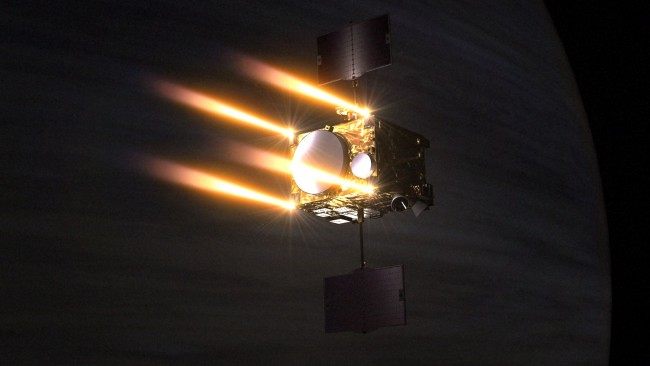
Japanese spacecraft “akatsuki” was finally successfully launched on a given elliptic orbit around Venus. We remind you that the handset was launched to Venus in may 2010, however, the first attempt of its output to the orbit of the planet failed. Within five years the Japanese aerospace exploration Agency (JAXA) worked on the way out of this difficult situation. Now it’s safe to say that they managed to get out of it winners.
“Akatsuki” is translated from the Japanese as “dawn” or “dawn.” Spacecraft mass is 640 pounds, of which only 34 pounds is a scientific equipment. It is equipped with two solar panels that generate about 500 watts of electricity. After an unsuccessful maneuver to enter orbit of Venus in December 2010, the communication with the device was gone for an hour. It turned out that the culprit was a faulty valve in one of the fuel lines. Insufficient power of engine led to its premature stop.

Within five years, JAXA scientists worked to restore the antenna of the spacecraft and went through the options with which you can repeat failed the first time maneuver. Five years the device flew on the solar orbit, and only 7 December 2015 “akatsuki” with the help of thrusters, enabled for 20 minutes, was placed in orbit on Venus. The next phase of trajectory correction device is scheduled for March 26, 2016. Collecting data about the planet’s atmosphere is scheduled for April of next year.

The purpose of the mission “akatsuki” is the study of Venus, photographing its surface using a variety of cameras, detecting the presence of lightning in the planet’s atmosphere, determining the presence or absence of volcanic activity. In the Arsenal of “akatsuki” is bliznetsova infrared camera range 1 and 2 µm, medium wave infrared camera, ultraviolet range, the camera for observing lightning and airglow, as well as a generator of radiation for sounding of the atmosphere.
